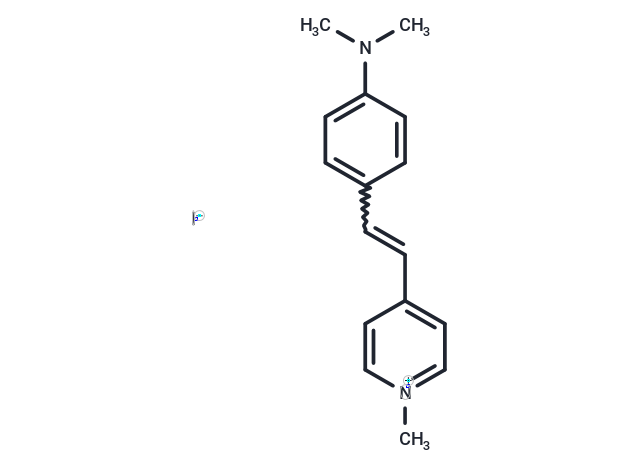Shopping Cart
Remove All Your shopping cart is currently empty
Your shopping cart is currently empty
4-Di-1-ASP is a positively charged fluorescent dye used to label glioma cells in live brain tissue and can also be used to observe mitochondria in live cells, with λex/λem = 475/606 nm.

| Pack Size | Price | USA Warehouse | Global Warehouse | Quantity |
|---|---|---|---|---|
| 100 mg | $37 | - | In Stock | |
| 200 mg | $54 | - | In Stock |
| Description | 4-Di-1-ASP is a positively charged fluorescent dye used to label glioma cells in live brain tissue and can also be used to observe mitochondria in live cells, with λex/λem = 475/606 nm. |
| In vitro | Instructions (The following is a recommended protocol; actual procedures may be adjusted according to specific experimental needs)[1]: Dissolve the 4-Di-1-ASP in distilled water to prepare a 2 mM stock solution. Place the cell sections in a 35°C incubator, add the working dye solution to achieve a final concentration of 1 μM, and incubate for 10 minutes. After staining, mount the sections on a microscope slide, cover with a coverslip, and observe using a confocal fluorescence microscope. The optimal excitation and emission wavelengths are 475 nm and 606 nm, respectively. |
| Molecular Weight | 366.24 |
| Formula | C16H19IN2 |
| Cas No. | 959-81-9 |
| Smiles | [I-].C(=CC1=CC=[N+](C=C1)C)C2=CC=C(C=C2)N(C)C |
| Storage | keep away from moisture,keep away from direct sunlight | store at -20°C | Shipping with blue ice/Shipping at ambient temperature. | |||||||||||||||||||||||||||||||||||
| Solubility Information | DMSO: 40 mg/mL (109.22 mM), Sonication is recommended. | |||||||||||||||||||||||||||||||||||
Solution Preparation Table | ||||||||||||||||||||||||||||||||||||
DMSO
| ||||||||||||||||||||||||||||||||||||
| Size | Quantity | Unit Price | Amount | Operation |
|---|

Copyright © 2015-2025 TargetMol Chemicals Inc. All Rights Reserved.